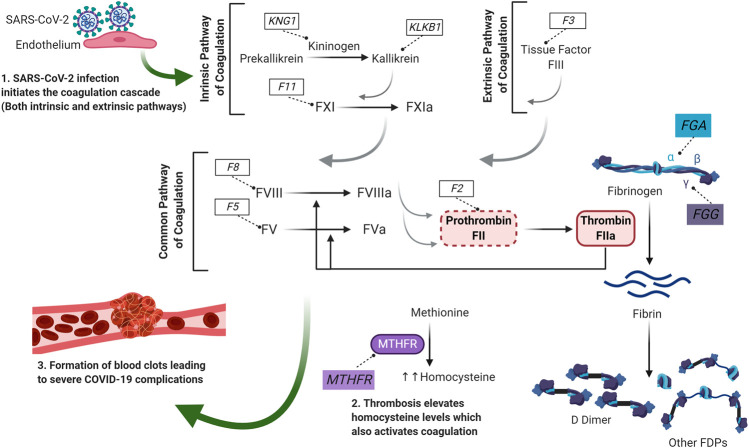FIGURE 1.
The molecular link between key genes in coagulation during COVID-19 infection. SARS-CoV-2 infection results in an injury in the endothelium which leads to the activation of the coagulation cascade; both the intrinsic and the extrinsic pathway. Within the extrinsic pathway, tissue factor (encoded by F3) initiates the cascade to activate the common pathway of coagulation. Within the intrinsic pathway, prekallikrein is converted to kallikrein via the action of kininogen and factor XI is activated. The activation of Factor XI initiates the common pathway of coagulation and leads to the activation of several coagulation factors including factor VIII and factor V. Thrombin converts Fibrinogen to Fibrin. Fibrin is then broken down to D-dimer and other FDPs. This SARS-CoV-2-induced thrombosis also leads to elevated levels of homocysteine which can eventually activate the coagulation cascade. Genes of interest are presented in boxes. For purpose of clarity, this illustration is only highlighting the genes of interest that were picked by XGR analysis to associate with thrombosis. Grey arrows indicate activation of other coagulation factors. F: Coagulation Factor, Fa: activated coagulation factor. FDPs: Fibrin degradation products, FGA: Fibrinogen alpha chain, FGG: Fibrinogen gamma chain, KLKB1: kallikrein, KNG1: Kininogen 1, MTHFR: methylenetetrahydrofolate reductase.

